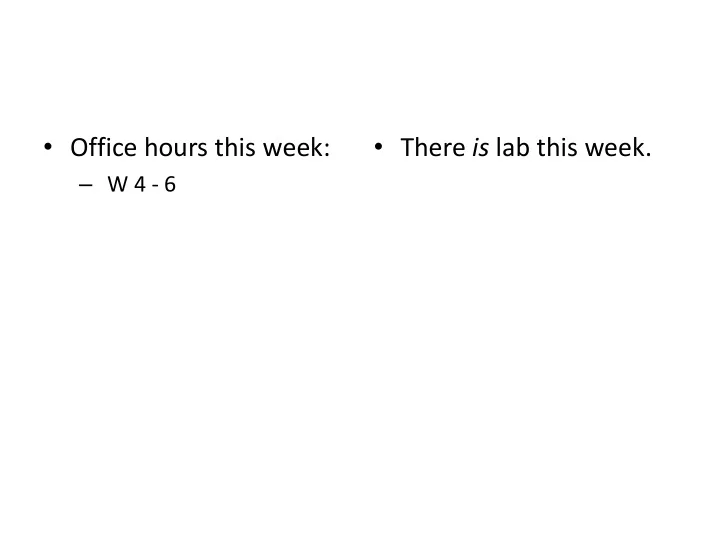

• Office hours this week: • There is lab this week. – W 4 - 6
Clickers • IT will collect them here at the end of the last class.
A cubical surface with no charge enclosed and with sides 2.0 m long is oriented with right and left faces perpendicular to a uniform electric field E of (1.6 10 5 N/C) in the +x direction. The net electric flux f E through this surface is approximately 1) zero 2) 6.4 10 5 N · m 2 /C 3) 13 10 5 N · m 2 /C 4) 25 10 5 N · m 2 /C 5) 38 10 5 N · m 2 /C
Which of the following statements contradicts one of Maxwell's equations? 1) A changing magnetic field produces an electric field. 2) The net magnetic flux through a closed surface depends on the current inside. 3) A changing electric field produces a magnetic field. 4) The net electric flux through a closed surface depends on the charge inside. 5) None of these statements contradict any of Maxwell's equations.
Maxwell’s Equations – The Fundamental Laws of Electromagnetism • Gauss’ Law – The total electric flux through a closed surface is proportional to the charge enclosed: Q E n ˆ encl dA 0 • Gauss’ Law for Magnetism – The total magnetic flux through a closed surface is zero. – There are no magnetic charges. B n dA ˆ 0
The Maxwell-Ampere Law • The integral of around a closed curve is B dl proportional to the current piercing a surface bounded by the curve plus times the time 0 rate of change of electric flux through the surface. d E B dl I 0 encl 0 dt d ˆ B dl I E n dA 0 encl 0 Figure 31.3 dt
Faraday’s Law • The integral of around a closed curve is E dl proportional the time rate of change of magnetic flux through a surface that is bounded by the curve. d ˆ dA E dl B n dt Figure 29.27c
An ac voltage is applied across a capacitor. Which figure best represents the magnetic field between the capacitor plates?
Faraday’s and Maxwell -Ampere Laws • A changing magnetic flux produces a curly electric field: d ˆ E dl B n dA dt • A changing electric flux produces a (curly) magnetic field: d ˆ B dl I E n dA 0 encl 0 dt
Self-sustaining fields • Can electric and magnetic fields exist without any charges or currents around to produce them? • Yes, but only if the fields are “moving” (i.e. changing: – Electromagnetic waves
A moving “slab” of E and B fields • Thin region in which there are uniform electric and magnetic fields. – No charges or currents in the vicinity of the slab. – Outside the slab, both fields are zero. – Inside the slab, E and B are perpendicular to each other. – Slab moves in a direction perpendicular to both fields. E E B E v v v B B front view top view
Slab obeys Gauss’ Laws for E and B Q E n ˆ encl dA E 0 v B B n dA ˆ 0
A cubical surface with no charge enclosed and with sides 2.0 m long is oriented with right and left faces perpendicular to a uniform electric field E of (1.6 10 5 N/C) in the +x direction. The net electric flux f E through this surface is approximately 1) zero 2) 6.4 10 5 N · m 2 /C 3) 13 10 5 N · m 2 /C 4) 25 10 5 N · m 2 /C 5) 38 10 5 N · m 2 /C
Does Slab obey Faraday’s Law? E E B v v B front view d ˆ dA E dl B n dt
Does Slab obey Maxwell-Ampere Law? E B E v v B top view d ˆ B dl I E n dA 0 encl 0 dt
Recommend
More recommend